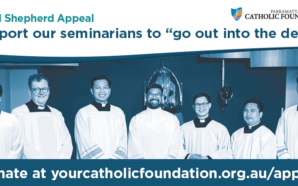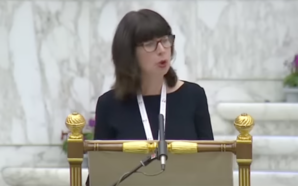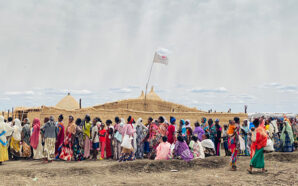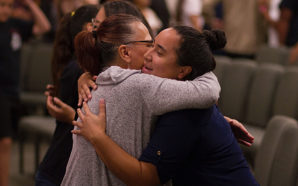In this time of the pandemic lockdown of our churches, Mass without the people has been a problem for many priests. We have become so used to celebrating “with the assembly” that we miss our people, and that is good. We can picture their faces and hear their voices. We also feel their suffering at being deprived of our sacramental ministry. However, some of us find it difficult to comply with the bishops’ request that we continue to celebrate daily Mass without them, whether in church, chapel or presbytery.
Drawing on the teachings of the Second Vatican Council (Presbyterorum Ordinis 13), the Code of Canon Law 1983 sets out clearer guidance on daily Mass than was found in the old Code of 1917.
Canon 904: Remembering always that in the mystery of the Eucharistic Sacrifice the work of redemption is continually being carried out, priests are to celebrate frequently. Indeed daily celebration is earnestly recommended, because, even if it should not be possible to have the faithful present, it is an action of Christ and the Church in the carrying out of which priests fulfil their principle role.
The simplest form of Mass
However, is the priest required always to have a server or someone else present? The post-Vatican II Roman Missal provides The Order of Mass with the Participation of a Single Minister (CTS edition, pp. 775-784).
The directives for this simplest way of celebrating the Eucharist with a server are set out in the General Instruction of the Roman Missal, nos. 252-272. The guidelines have been revised slightly since the first edition of the Missal but there is only a passing reference to Mass alone.
The Code again guides us in a pastoral way in Canon 906: A priest may not celebrate the Eucharistic Sacrifice without the participation of at least one of the faithful, unless there is a good and reasonable cause for doing so. The conditions imposed on us by the Pandemic and the request of the bishops obviously provide “a good and reasonable cause”.
A Deeper Ecclesiology
These times of deprivation and pastoral challenges should prompt us to reflect on the words of the Code, referring to the Eucharistic celebration as “an action of Christ and the Church in the carrying out of which priests fulfil their principle role”.
The solitary celebrant acts and speaks for the whole Church, on earth and in eternity. This is when praying “in communion with” Mary, the saints and angels makes sense and resonates. At the altar, we are united with the “Church invisible”. We may expand the meaning of the called and assembled People of God. We should understand that the Church is primarily a mystery, which is what Lumen Gentium chapter 1 affirmed as the premise for the Council’s rich teachings on the nature of the Church.
We are invited into a deeper ecclesiology, the Mystical Body of Christ expressed vividly in Lumen Gentium 7. “…by communicating his Spirit, Christ mystically constitutes as his body those brothers and sisters of his who are called together from every nation.”
Jesus Christ, Priest and Head is offering the eternal liturgy in his mystical Body, his living Church. This “action of Christ and the Church” is set out in the Council’s teaching on the meaning of liturgy in the first chapter of Sacrosanctum Concilium, which is always worth reading again. Let the words of the Council Fathers guide us anew, as we “take, bless, break and give” at our hermit’s altar. Here we know we are not alone.
Practical Questions
Some liturgical points should be kept in mind when celebrating alone. No cutting corners with the texts and certainly not with the vessels, vestments etc. We should remember those brave priests who in times of persecution tried their best to give “the best” to God. Chalices made to be concealed, but beautifully fashioned, testify to the care taken in Penal Times in Ireland, England, Wales and Scotland, when hunted priests offered secret Masses with the persecuted Catholic faithful.
However, celebrating the Eucharist in total silence, mouth shut, is never right. When I worked in Rome, I encountered this mistaken piety among some young priests, who thought they were being very “traditional”. The celebrant is to articulate the words. The same applies to concelebrants, as set out in GIRM 218 and 222. Concelebrants who stand dumb at the consecration are not concelebrating, that is, unless they happen to be Greek Orthodox! Likewise, in a Mass celebrated alone, the priest should articulate the words, with different levels of voice according to common sense in the Ordinary Form or with the levels that are prescribed in the Extraordinary Form.
Yet there is a directive in GIRM 254 that a solitary celebrant should leave out “the greetings, the instructions and the blessing at the end of Mass” Even when a server is present he omits the dismissal, GIRM. 272.
With experience of celebrating Mass alone, in the years when I worked in the Vatican, I know that this liturgical rationalism just does not work. Take the prefaces. They are integrally bound to the dialogue that introduces each of them and this is the true beginning of the Eucharistic prayer. My counsel is to do what has always been done in these circumstances, make the people’s responses quietly. Become their voice.
Saying the people’s responses, even in a whisper, makes sense once we reflect again on the meaning of the Communion of Saints: that the Church is a communion of the faithful here on earth and that the earthly Church is in communion with all the faithful in eternity. So we also give voice to the unseen Church, our brothers and sisters waiting in hope in purgatory and triumphant in love in heaven.
When we come to the Communion Rite, I suggest that we pause after receiving the Lord and do something unusual. We are encouraging people at home to make Spiritual Communions, so let us spiritually minister Communion to them. By this, I mean that we may offer a silent personal prayer as we picture our flock and spiritually offer them the divine gift. We pray in hope, looking to the day when we will minister to them sacramentally, face to face. After that moment of prayer, proceed to cleanse the vessels.
Rediscovering our priestly identity
Returning to Canon 904, we find that priests are central in the description of the Eucharistic celebration as “an action of Christ and the Church in the carrying out of which priests fulfil their principle role”. What is this “principle role”?
We strip the car’s engine down to the essential block. Ours is a eucharistic priesthood. We are called and consecrated for the Eucharist, to “do this”. The meaning of our priesthood flows from the “summit and source”, the Eucharist. With his creative divine word to “do this”, at the Last Supper Jesus Christ ordained his disciples to be priests of a New Covenant, a Melchisedek priesthood, that replaced the inherited Aaronic priesthood and temple sacrifices of the Old Covenant. His eternal priesthood is shared with the men he calls and permanently consecrates to act in his Person.
However, this is his servant priesthood, not a cultic function. This is his servant leadership, not clerical domination. This is his ministry of heralds who call people to Baptism and the Eucharist by proclaiming and preaching the word of God. This priesthood is his ministry of healing and reconciling grace, derived from the great reconciliation of the Cross and Resurrection. This priesthood activates the baptismal priesthood of the lay faithful.
Mass alone or with one server focuses us on the sacrificial dimension of the Eucharist. Remembering always that in the mystery of the Eucharistic Sacrifice the work of redemption is continually being carried out. The words of Canon 904 echo the ancient Prayer Over the Offerings in the Holy Thursday Mass of the Lord’s Supper, cited in GIRM, 2 – “for whenever the memorial of this sacrifice is celebrated the work of our redemption is accomplished…”
In this perspective, the four ends of the work of our redemption in the Lord’s Sacrifice come to mind: adoration, praise and thanksgiving, intercession, atonement for sins of the living and the dead. In restricted circumstances, the Mass is especially the great prayer of intercession, the sacrifice of the Church when Christ the Priest intercedes for us. Configured to him, the priest celebrant is the intercessor whose pastor’s heart goes out to the people entrusted to his care, a good shepherd who knows his sheep even when he can no longer minister directly to them.
Praying better
This is a time for priests prayerfully to rediscover the riches of the liturgy, whether they celebrate in the Ordinary Form or the Extraordinary Form. Permit me to share some spiritual counsel that I have already given myself.
I need to slow down and take time, not only to read the words in the missal, but to absorb their meaning, to reflect on what I do and what I say. Let me recall what the bishop said at my ordination as he placed the offerings in the chalice and paten into my hands: “Receive the oblation of the holy people, to be offered to God. Understand what you do, imitate what you celebrate, and conform your life to the mystery of the Lord’s Cross.”
May I not be distracted by little details in the translation or by wondering about some odd Latin word. Time to focus on what matters, and there is plenty of time. Time to focus on who matters, on Jesus and my people and on my isolated brother priests, all of us held in his merciful Heart.
This prayerful renewal may also happen with the daily recitation of the Liturgy of the Hours. I find myself thinking, “But I have been reading what is in this part of the Office of Readings for over 45 years and only now do I discover something new, something fresh…” A judgement on me for praying the Office so hurriedly. So much to do, so little time, and now there is all the time in the world.
Our hermit’s liturgy can sustain us spiritually in this time of trial. Above all, as priestly intercessors, we pray to God for our people, that they may be strengthened and consoled. With paschal hope, we all look forward to the day when the viral storm has passed and God will gather us together once more at our altars.
Used with the permission of Bishop Peter J. Elliott, Auxiliary Bishop Emeritus of Melbourne.








